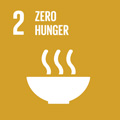- Docente: Giuliano Bettini
- Credits: 3
- SSD: VET/03
- Language: English
- Teaching Mode: In-person learning (entirely or partially)
- Campus: Bologna
- Corso: Second cycle degree programme (LM) in Food Animal Metabolism and Management in the Circular Economy (cod. 6815)
-
from Dec 01, 2025 to Jan 16, 2026
Learning outcomes
At the end of the module, students: 1. can explain the relationships between stress, inflammation and immune response; 2. know the main hepatic and gastrointestinal pathologies that can interfere with metabolic efficiency; 3. can correlate humoral parameters for estimating metabolic efficiency with physiological or pathological processes.
Course contents
This course is part of the Integrated Course “MORPHO-FUNCTIONAL AND PATHOLOGICAL BASIS OF ANIMAL METABOLISM AND STRESS”. The final mark is signed by Prof. Domenico Ventrella, holder of the module 2 PHYSIOLOGY OF ANIMAL METABOLISM AND STRESS
Upon completion of the Integrated Course unit, the student will be able to understand the anatomical, physiological and pathological correlation in animal metabolism, with particular emphasis on stress causes and consequences.
Specific Contents
Lectures (16 hours):
- PRESENTATION OF THE COURSE (2 hours)
- Definition of Pathology; the work of the pathologist; methods in pathology
- DEFINITION AND EXAMPLES OF SIGNIFICANT STRESSORS IN FARM ANIMALS (2 hours)
- Environmental Factors. Heat, Cold, Humidity, Noise, Lighting
- Management Factors. Handling, Transportation, Housing Conditions, Procedures
- Nutritional Factors. Dietary Imbalances, Lack of essential nutrients, Overfeeding, sudden changes in diet, Water Availability
- Social Factors. Social Hierarchies, Isolation
- Health Status. Illnesses, injuries, parasites
- Reproductive Status. Pregnancy, Parturition, Lactation
- MECHANISMS OF INITIATION OF METABOLIC DISORDERS BY STRESS FACTORS (2 hours)
- Activation of the Hypothalamic-Pituitary-Adrenal Axis. Cortisol Release; Energy Redistribution
- Impact on Glucose Metabolism. Insulin Resistance, Hyperglycemia
- Altered Protein Metabolism. Muscle Catabolism, Reduced Growth
- Lipid Metabolism Dysregulation. Increased Lipolysis, Ketosis
- Immune System Suppression. Increased Susceptibility to Infections, Chronic Inflammation
- Reproductive and Lactation Performance. Reduced fertility, Irregular estrous cycles, Higher rates of pregnancy loss, Reduced milk production
- Nutritional Imbalances. Feed Intake Reduction, Digestive Issues
- EXAMPLES OF METABOLIC DISORDERS INDUCED BY STRESS (10 hours)
- Bovines. Ketosis, Fatty Liver Syndrome, Hypocalcemia, Displaced Abomasum, Laminitis, Rumen Acidosis, Pregnancy Toxemia
- Small Ruminants. Pregnancy Toxemia – Ketosis, Hypocalcemia - Milk Fever, Enterotoxemia - Pulpy Kidney, Acidosis, Laminitis, White Muscle Disease, Hypomagnesemia - Grass Tetany
- Swine. Porcine Stress Syndrome (PSS), Exudative Epidermitis (Greasy Pig Disease), Metabolic Myopathy - Pale Soft Exudative Meat (PSE), Ketosis, Fatty Liver Syndrome, Acidosis, Heat Stress, Hypertension, Gastric Ulcers, Post-Weaning Multisystemic Wasting Syndrome (PMWS); Hypoglycemia in Piglets, Iron Deficiency Anemia
- Poultry. Fatty Liver Hemorrhagic Syndrome (FLHS), Ascites (Pulmonary Hypertension Syndrome), Osteoporosis (Cage Layer Fatigue), Hypoglycemia (Sudden Death Syndrome), Gout, Rickets, Sudden Death Syndrome (Flip-Over Disease), Deep Pectoral Myopathy (Green Muscle Disease), White Striping, Wooden Breast Syndrome
- Farmed fishes. Acidosis, Hypoxia, Nitrite Poisoning, Gill Disease, Metabolic Stress Syndrome, Swim Bladder Disorders, Stress-Induced Hyperglycemia, Muscle Degeneration (Myopathy), Stress-Induced Immunosuppression.
Practical and interactive sessions (12 hours):
- Analysis of real-life case studies. Student presentations on specific topics (10 hours)
- Visit of the Pathology Museum (2 hours)
Readings/Bibliography
The teaching materials for this course are available on the Virtuale Learning Environment (https://virtuale.unibo.it/?lang=en ).
Relevant articles from scientific journals
Teaching methods
Lectures and student presentations on specific topics and case study analysis, with interactive discussions and group work
The course setting is aimed at promoting student's active learning by analyzing and elaborating clinical cases and specific topics, according to the self-directed learning model (working in groups and personal processing). Students will be provided with reference materials (articles from scientific journals, chapters or extracts from books) with which they will have to prepare presentations on the most common stress-induced diseases in farmed animals, also selected based on their personal interests. All students must attend all student presentations.
Considering the types of activities and teaching methods adopted, attendance for this course requires the successful completion of Modules 1 and 2 via e-learning, and Module 3 on health and safety training in study environments. Information about the schedule and access to Module 3 is available in the dedicated section of the Degree Program website.
Participation in practical and laboratory sessions requires wearing a lab coat and appropriate footwear. Suitable personal protective equipment (PPE), such as disposable latex gloves, will be provided as needed.
Assessment methods
-
The assessment for the Integrated Course “MORPHO-FUNCTIONAL AND PATHOLOGICAL BASIS OF ANIMAL METABOLISM AND STRESS” is performed in a unique session, and consists of a written multiple-choice test including 40 questions covering all topics from the component courses of the IC, aimed at assessing the acquisition of expected knowledge. In particular, the final evaluation is aimed at defining the achievement of the following training objectives:
The student
- knows the key anatomical and physiological bases of food producing animals for humans.
- knows the control factors of energy, nitrogen and mineral metabolism.
- understands animals’ ethological needs and the adaptive response to stress (environmental and metabolic).
- will be able to evaluate the consequences in terms of metabolic inefficiency and pathological stress disorders, morphological defects, and organic dysfunctions.
- will be able to holistically apply the acquired knowledge in the context of a correct company management of the physiological needs of food producing animals.
The final grade will be defined as follows:
- 90% score achieved in a test consisting of 2 transversal open questions and 40 multiple choice questions (10 for anatomy, 10 for pathology, and 20 for physiology) that will take place at the end of the second part of the course.
- 10% evaluation of students' active participation in laboratory or self-employment activities.
GRID FOR VOTE ALLOCATION
scoring for open questions: minimum 24/40
scoring 24: grading 18
scoring 25: grading 19
scoring 26: grading 20
scoring 27: grading 21
scoring 28: grading 22
scoring 29: grading 23
scoring 30: grading 24
scoring 31: grading 25
scoring 32: grading 26
scoring 33-34: grading 27
scoring 35-36: grading 28
scoring 37-38: grading 29
scoring 39-40: grading 30
scoring for multiple choice questions: minimum 24/40. Each multiple-choice question has four alternatives and only one correct answer. The possible scores are 0 (incorrect) or 1 (correct). Failure to answer is deemed incorrect
scoring 24: grading 18
scoring 25: grading 19
scoring 26: grading 20
scoring 27: grading 21
scoring 28: grading 22
scoring 29: grading 23
scoring 30: grading 24
scoring 31: grading 25
scoring 32: grading 26
scoring 33-34: grading 27
scoring 35-36: grading 28
scoring 37-38: grading 29
scoring 39-40: grading 30
The final grade will be composed of the weighted average between the written test score (open and closed questions) and the score of the laboratory/ongoing activity. Score for active participation in laboratory or self-employment activities of students; variable score from 18 to 30 according to the following evaluation grid:
- A very thorough knowledge of the topics addressed in the course, together with high critical analysis and connection skills, and a confident command of specific terminology will be evaluated with the maximum score (30-30L).
- A thorough knowledge of the topics covered in the course, together with good analytical and critical skills and the possession of a sure command of specific terminology will be evaluated with good marks (27-29).
- A technically adequate preparation and a sufficient analytical capacity, even if not particularly articulated, expressed in a correct language, will produce fair evaluations (23-26).
- Sufficient preparation and analytical skills, expressed in a language that is formally barely correct, will grant sufficiency (18-22).
To get the final score:
[(written part vote * 90) + (ongoing part vote * 10)] / 100
A minimum score of 18/30 is required to pass the exam.
No supplementary materials or electronic devices (e.g., calculators, tablets, smartwatches, computers) may be used during the exam, except for those explicitly allowed by the instructor.
The results of the written exam will be published within 5 working days on the Virtuale Learning Environment (https://virtuale.unibo.it/?lang=en ) by the designated course contact.
Negative results are not graded numerically but recorded as “withdrawn” or “failed” in the electronic transcript on AlmaEsami, and do not affect the student’s academic record.
Students may reject once the final grade (University teaching regulations ART. 16, paragraph 5) by informing the course examiner via email within 5 working days. The designated course contact for this course is Prof. Domenico Ventrella
Students can register for exams through the AlmaEsami platform (http://almaesami.unibo.it/ ). Exams are scheduled during the designated periods in the academic calendar. Additional sessions are available for students beyond the standard program duration.
Students with learning disorders and/or temporary or permanent disabilities: please, contact the office responsible (https://site.unibo.it/studenti-con-disabilita-e-dsa/en/for-students ) as soon as possible so that they can propose acceptable adjustments. The request for adaptation must be submitted in advance (15 days before the exam date) to the lecturer, who will assess the appropriateness of the adjustments, taking into account the teaching objectives.
Teaching tools
- PowerPoint slides of lectures
- PowerPoint slides of student presentations
- Handout provided by the teacher
- PDFs of relevant articles on scientific journals
- Pertinent videos and selected websites
Students will also be invited to perform a bibliographic research on the assigned topic, on-line or in the library, to obtain further material for in-depth study
In case of difficulty understanding the course content, the instructor is available for clarification meetings, which must be scheduled via email.
Office hours
See the website of Giuliano Bettini
SDGs




This teaching activity contributes to the achievement of the Sustainable Development Goals of the UN 2030 Agenda.
